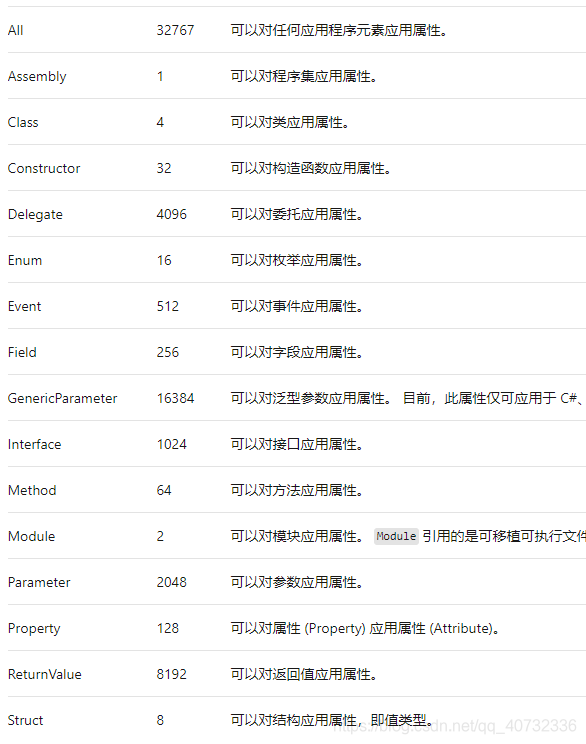前言
在工作或者学习中,难免或多或少的接触到特性这个东西,可能你不太清楚什么是特性,那么我给大家举两个例子 [Obsolete],[HttpGet],[HttpPost],[Serizlized],[AuthorizeFilter] (总有你见过的一个吧) 。有没有觉得好熟悉,下面跟着小赵一探究竟。
特性(Attribute)用于添加元数据,如编译器指令和注释、描述、方法、类等其他信息。
特性(Attribute)的名称和值是在方括号内规定的,放置在它所应用的元素之前。positional_parameters 规定必需的信息,name_parameter 规定可选的信息。
特性的定义
特性的定义:直接或者间接的继承 Attribute 类
定义完就直接可以在方法前面用 [CustomAttribute] 可以省略 Attribute 写成[Custom]
在特性类上面的特性
/// AttributeTargets.All --可以修饰的应用属性
/// AllowMultiple = true ---是否可以进行多次修饰
[AttributeUsage(AttributeTargets.All,AllowMultiple = true)]



特性的使用
特性本身是没有啥用,但是可以通过反射来使用,增加功能,不会破坏原有的封装
通过反射,发现特性 --实例化特性--使用特性
通过特性获取表名(orm)就是一个很好的案例
首先定义个类,假装和数据库中的表结构一样,但表明是t_student
可以通过两个方法来获取表名(方法1加字段,或者扩展方法tostring,但都破坏了以前的封装,不提倡这样做),然后就用到今天学习的特性attribute了
public class Student
{
//public static string tablename = "t_student";
//public string tostring()
//{
// return "t_student";
//}
public int id { get; set; }
public string Name { get; set; }
public int Sex { get; set; }
}
在定义特性类TableNameAttribute
//1.声明
public class TableNameAttribute:Attribute
{
private string _name = null;
//初始化构造函数
public TableNameAttribute(string tablename)
{
this._name = tablename;
}
public string GetTableName()
{
return this._name;
}
}

然后再student前面加上自定义特性

实现特性的扩展方法
//通过反射获取表名
public static string GetName(Type type)
{
if (type.IsDefined(typeof(TableNameAttribute),true))
{
TableNameAttribute attribute =(TableNameAttribute)type.GetCustomAttribute(typeof(TableNameAttribute), true);
return attribute.GetTableName();
}
else
{
return type.Name;
}
}


F5执行,查看运行结果

总结
特性本身是没有啥用,但是可以通过反射来使用,增加功能,不会破坏原有的封装
项目我放再我的github
https://github.com/PrideJoy/NetTemple/tree/master/%E7%89%B9%E6%80%A7
 发表于 2021-3-29 01:53
发表于 2021-3-29 01:53
 发表于 2021-3-29 03:02
发表于 2021-3-29 03:02
 发表于 2021-3-29 06:41
发表于 2021-3-29 06:41
 发表于 2021-3-29 07:48
发表于 2021-3-29 07:48
 发表于 2021-3-29 07:51
发表于 2021-3-29 07:51